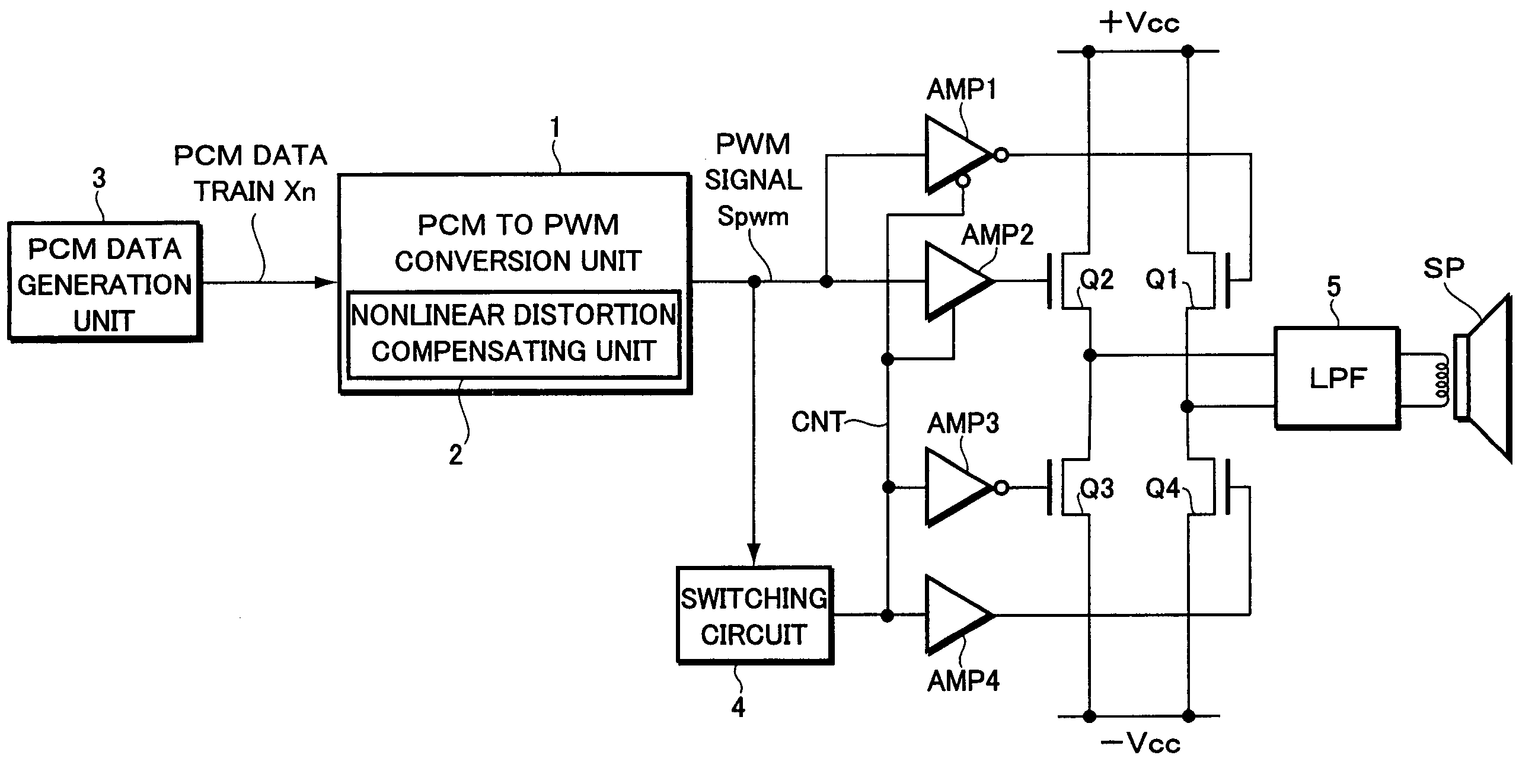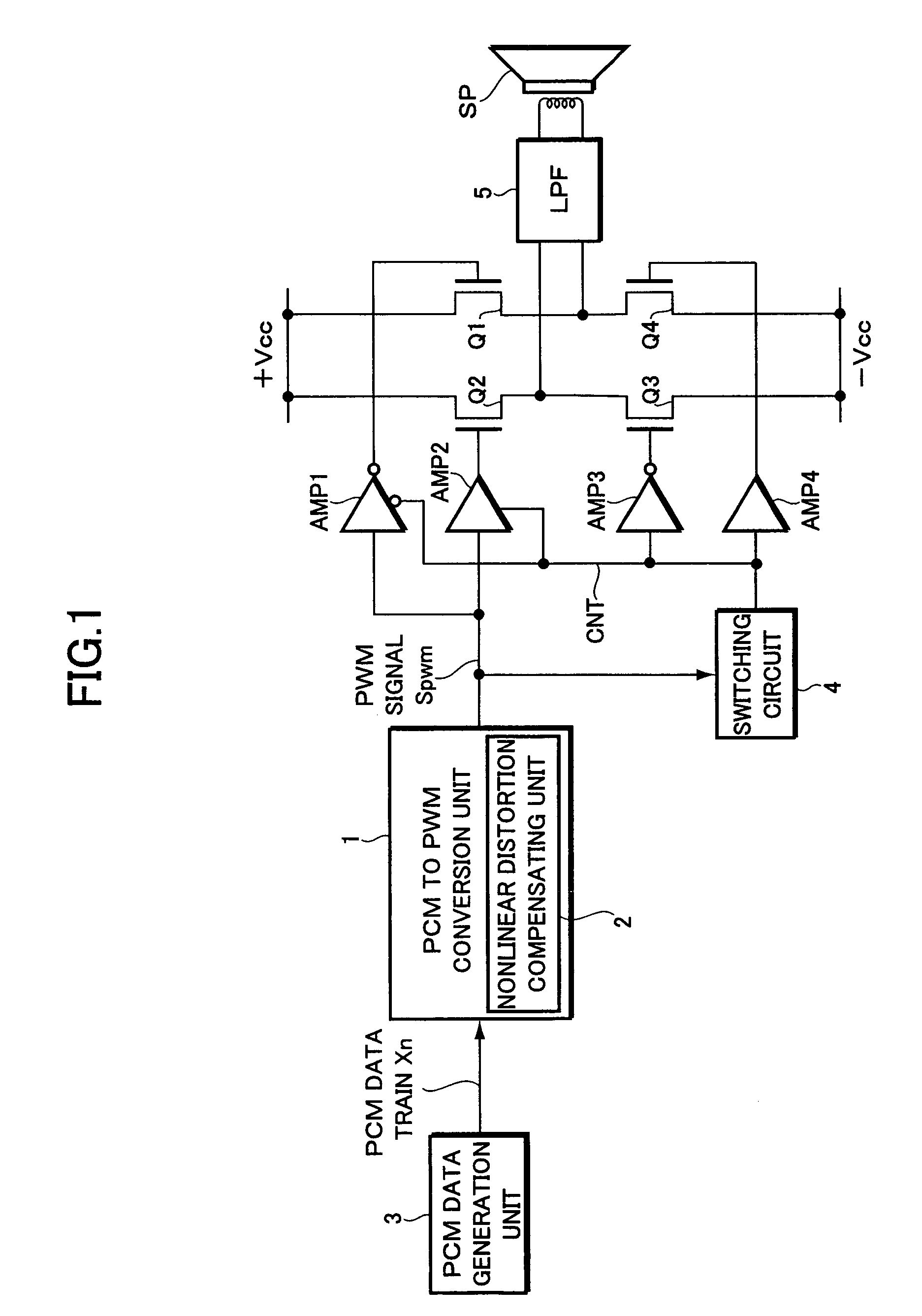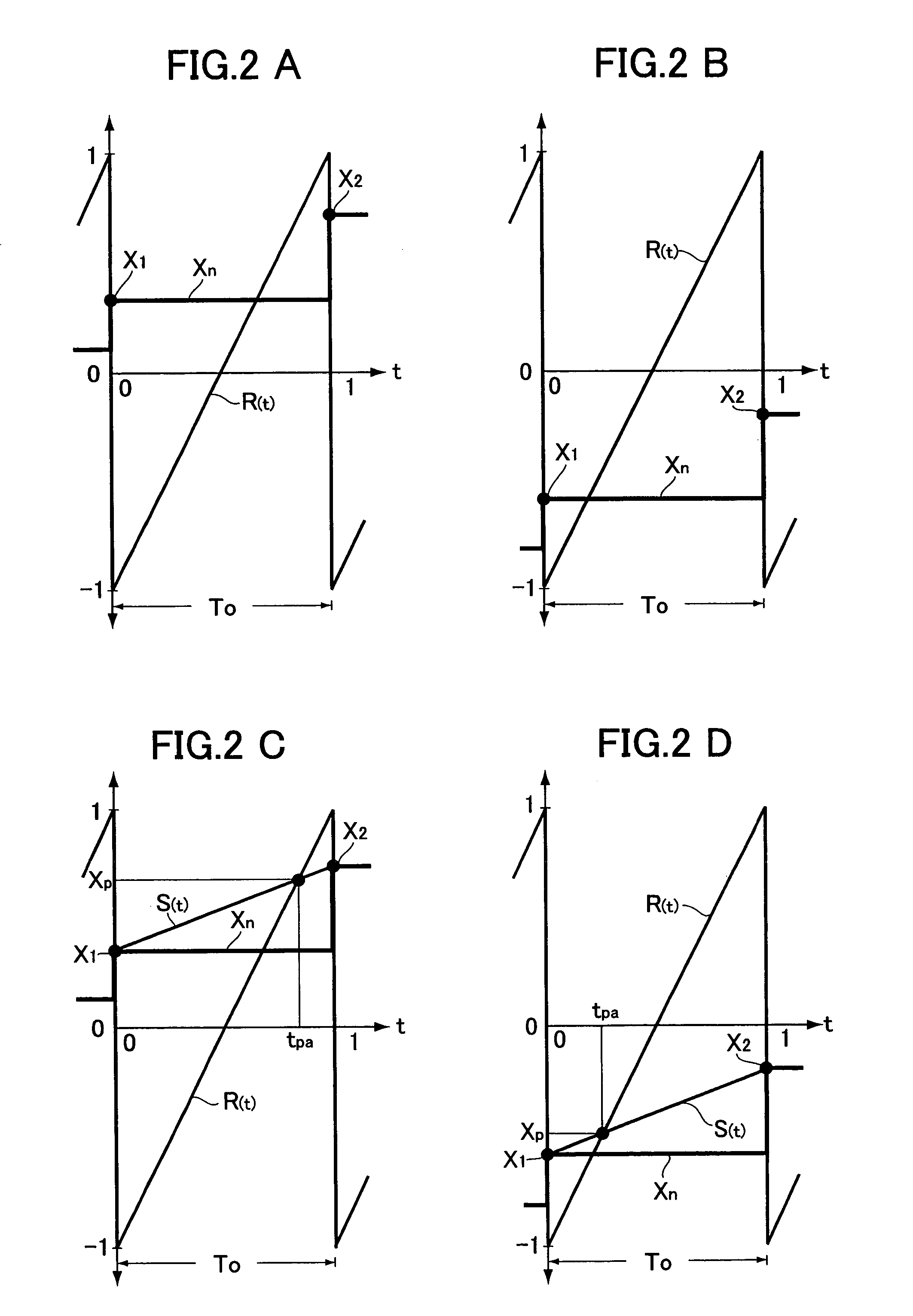Pulse width modulator and pulse width modulation method
a pulse width and modulator technology, applied in pulse conversion, instruments, pulse techniques, etc., can solve the problems of requiring many computation steps, causing distortion in reproduced sound, and difficult to provide a high-quality reproduction of sound, so as to reduce nonlinear distortion and reduce nonlinear distortion
- Summary
- Abstract
- Description
- Claims
- Application Information
AI Technical Summary
Benefits of technology
Problems solved by technology
Method used
Image
Examples
first embodiment
[0050
[0051]A first embodiment of the present invention will be described with reference to FIGS. 1 to 4B.
[0052]FIG. 1 is a view showing the configurations of a pulse width modulator according to this embodiment and an exemplary digital amplifier utilizing the pulse width modulator.
[0053]FIGS. 2A to 4B are views showing the principle of the interpolation processing performed by the pulse width modulator according to this embodiment upon producing a pulse width modulation (PWM) signal.
[0054]First, referring to FIG. 1, explained are the configurations of a pulse width modulator 1 according to this embodiment and an exemplary digital amplifier utilizing the pulse width modulator 1.
[0055]The pulse width modulator 1 includes a PCM to PWM conversion unit in which a PCM data train Xn varying within the range of a positive value and a negative value generated in accordance with a given sampling frequency fs is supplied to allow a sawtooth wave reference signal R(t) varying within the range o...
second embodiment
[0127
[0128]Now, a second embodiment of the present invention will be explained below with reference to FIGS. 5A to 6B.
[0129]This embodiment relates to a pulse width modulator for producing a PWM modulation signal from an oversampled PCM data train.
[0130]FIG. 5A is a view showing the configuration of the pulse width modulator, with the same parts as or the parts corresponding to those of FIG. 1 being indicated by the same symbols.
[0131]Referring to FIG. 5A, this embodiment is different from the first embodiment as follows. That is, a PCM data train Xn of a sampling frequency fs outputted from the PCM data generation unit 3 is oversampled by an oversampling unit 100 at a sampling frequency fov twice as high as the sampling frequency fs, and the pulse width modulator 1 produces and outputs a PWM signal Spwm synchronous with the sampling frequency fs in accordance with the oversampled PCM data train Xn.
[0132]In other words, as shown in FIG. 5B, when a PCM data train Xn of a certain samp...
PUM
 Login to View More
Login to View More Abstract
Description
Claims
Application Information
 Login to View More
Login to View More - R&D
- Intellectual Property
- Life Sciences
- Materials
- Tech Scout
- Unparalleled Data Quality
- Higher Quality Content
- 60% Fewer Hallucinations
Browse by: Latest US Patents, China's latest patents, Technical Efficacy Thesaurus, Application Domain, Technology Topic, Popular Technical Reports.
© 2025 PatSnap. All rights reserved.Legal|Privacy policy|Modern Slavery Act Transparency Statement|Sitemap|About US| Contact US: help@patsnap.com



